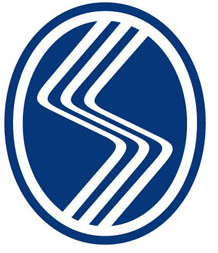Açık Akademik Arşiv Sistemi
Percutaneous transhepatic management of biliary strictures in patients with dysfunctioning plastic biliary endoprostheses
JavaScript is disabled for your browser. Some features of this site may not work without it.
| dc.contributor.authors | Oguslu, Umut; Danisan, Gurkan; Gumus, Burcak | |
| dc.date.accessioned | 2023-01-24T12:08:39Z | |
| dc.date.available | 2023-01-24T12:08:39Z | |
| dc.date.issued | 2022 | |
| dc.identifier.issn | 1300-0144 | |
| dc.identifier.uri | http://dx.doi.org/10.55730/1300-0144.5430 | |
| dc.identifier.uri | https://hdl.handle.net/20.500.12619/99520 | |
| dc.description | Bu yayın 06.11.1981 tarihli ve 17506 sayılı Resmî Gazete’de yayımlanan 2547 sayılı Yükseköğretim Kanunu’nun 4/c, 12/c, 42/c ve 42/d maddelerine dayalı 12/12/2019 tarih, 543 sayılı ve 05 numaralı Üniversite Senato Kararı ile hazırlanan Sakarya Üniversitesi Açık Bilim ve Açık Akademik Arşiv Yönergesi gereğince telif haklarına uygun olan nüsha açık akademik arşiv sistemine açık erişim olarak yüklenmiştir. | |
| dc.description.abstract | Background/aim: To evaluate the safety and outcomes of percutaneous transhepatic management of dysfunctioning plastic biliary endoprostheses (PBE) in patients with benign/malign biliary strictures. Materials and methods: Twenty-nine patients (22 men, 7 women; mean age of 60.7 (range 33-88) years) diagnosed with dysfunctioning PBE were included. Percutaneous transhepatic biliary drainage and subsequent PBE dislodgment into the bowel were performed in all cases. Patient demographics, etiology of the biliary stricture, indication, technical success, complications, and clinical outcomes were gleaned from medical records. Results: Seventeen patients had malignant strictures, while 12 patients had benign conditions. A total of 36 PBE (33 straight, 3 double-J) were treated. Six patients had more than one PBE. Successful dislodgement of the PBE was achieved in 28 (96.6%) of the cases. Monorail threading was performed in 8 cases while dislodgement by balloon friction was utilized in 21 patients. There was no statistical significance between benign and malignant biliary strictures regarding dislodgement duration (p = 0.080). No major complication was encountered. Thirteen minor complications in 10 patients including abdominal pain (n = 8) and mild hemobilia (n = 5) were observed and treated conservatively. Uneventful passage of the PBE was reported by all patients with technical success. Conclusion: Percutaneous transhepatic methods aid as a reasonable alternative in the treatment of benign and malignant biliary strictures in patients with dysfunctioning PBE when endoscopic approaches fail or are not eligible. | |
| dc.language | English | |
| dc.language.iso | eng | |
| dc.publisher | Scientific and Technological Research Council Turkey | |
| dc.relation.isversionof | 10.55730/1300-0144.5430 | |
| dc.subject | General & Internal Medicine | |
| dc.subject | Plastic biliary endoprostheses | |
| dc.subject | malignant biliary stricture | |
| dc.subject | benign biliary stricture | |
| dc.subject | percutaneous transhepatic biliary drainage | |
| dc.title | Percutaneous transhepatic management of biliary strictures in patients with dysfunctioning plastic biliary endoprostheses | |
| dc.type | Article | |
| dc.identifier.volume | 52 | |
| dc.identifier.startpage | 1249 | |
| dc.identifier.endpage | 1255 | |
| dc.relation.journal | TURKISH JOURNAL OF MEDICAL SCIENCES | |
| dc.identifier.issue | 4 | |
| dc.identifier.doi | 10.55730/1300-0144.5430 | |
| dc.identifier.eissn | 1303-6165 | |
| dc.contributor.author | Oguslu, Umut | |
| dc.contributor.author | Danisan, Gurkan | |
| dc.contributor.author | Gumus, Burcak | |
| dc.relation.publicationcategory | Makale - Uluslararası Hakemli Dergi - Kurum Öğretim Elemanı | |
| dc.rights.openaccessdesignations | Bronze |
Files in this item
| Files | Size | Format | View |
|---|---|---|---|
|
There are no files associated with this item. |
|||











